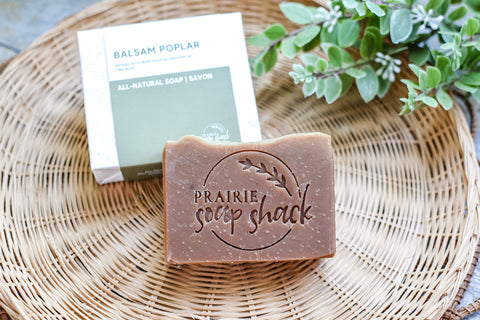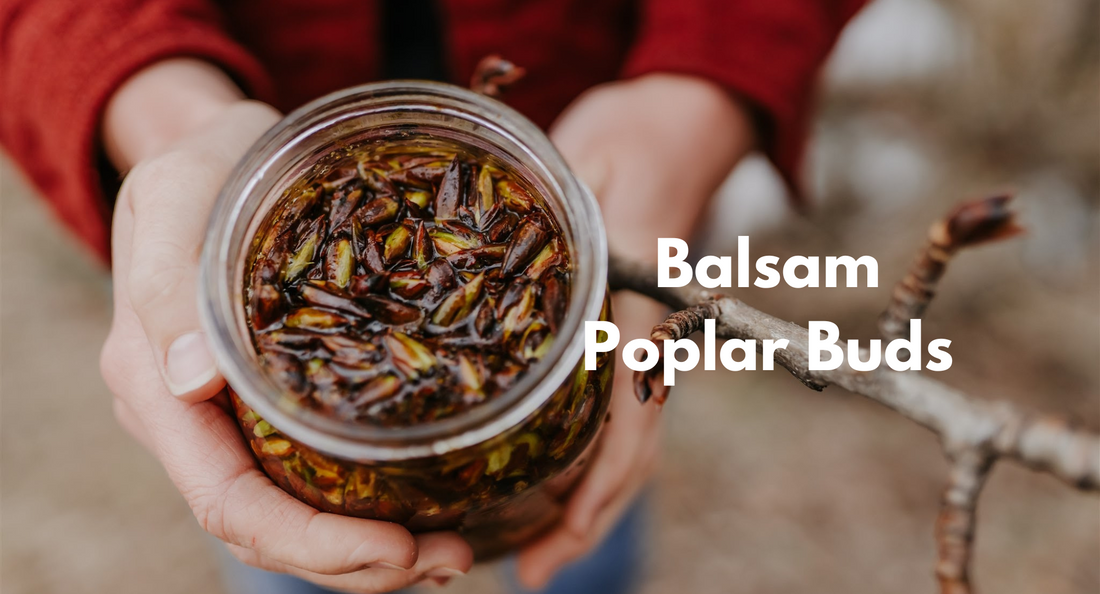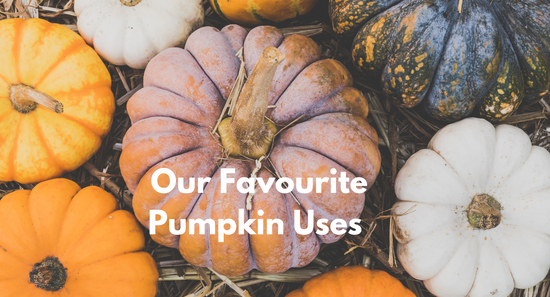(Original blog post from 2019) The leaves are just budding out here in central Alberta in Mid-May and we finally have a green hue over the prairies. We had an exceptionally long and cold winter, so the anticipation for Spring was doubled with my new foraging interest. The snow was melted in April but nothing yet sprouting so my eyes were searching for something I could forage and create with. That’s when I discovered balsam poplar buds filled with that aromatic, sticky resin. Most people know of this tree as the one not to park underneath as you would end up with sticky sap all over your hood. Anyways, so my research began as I was investigating the poplar buds on the several brush patches on our land, and my literature told me about “Balm of Gilead”. This was a salve mentioned in the Bible referring to a medicinal ointment for pain and inflammation and has been recorded several times over the last 2000 years. I’ll later mention all the benefits of the balsam poplar resin.
I’ll admit it took me some time to distinguish our poplars were trembling aspens (we didn’t yet have leaves or catkins; aka. Fluff) so I was searching for the correct species. Balsam poplars are in fact native to Canada and found in moist woods and prairie parklands. However, when you are looking for them is when they are hard to find. My father-in-law pointed out some balsam poplars to me, and I stood on old tractor tires to reach the buds; however they were so tall that most were out of my reach. You have to pick the buds before they leaf out, so I was running out of time. Then the end of April, on an evening drive at bedtime for my 3 year old to look for moose and deer, I came across several balsam poplars along a small country lake. I have learned to carry a jar or bag with me now in case I find something good to pick! So I picked every third bud and filled my jar.
Update March 2024- I know know how to distinguish the varieties better and can find the giant balsam poplars along water- by the river, sloughs or lakes. I've also learned to keep an eye open for fallen branches as the trees are SO tall, you can hit the goldmine by picking resinous buds off of a fallen branch right on the ground. I was even lucky enough to pick some in February from a fallen branch this year.


Next step was to lay the sweet sticky buds out to dry. I couldn’t believe how good they smelled, and it filled my kitchen with the aroma. Once dry, I placed them in a mason jar and filled it with olive oil. I did let it slowly infuse on my window sill in the sunshine for 3 weeks before I decided I was too antsy and heat-infused them in my slow cooker. You typically leave a cold infusion in the sunshine for 6 weeks, unless you do a hot infusion which takes 8 hours. I figured the heat would draw out the sticky resin better. So, my plan was to make two things. First, the traditional “Balm of Gilead” and second, a cold-process soap.

The balm was made with the olive oil infused with balsam poplar buds and local beeswax. Balm of Gilead is:
· Analgesic
· Anti-inflammatory
· Anti-bacterial
· Astringent
· Helps detoxify
· Helps heal coughs
It can relieve pain from sore muscles, arthritis, and broken bones. It can reduce swelling and inflammation. Balm of Gilead contains salicin, which converts to salicylic acid in your body, so do not use if you’re allergic to aspirin.
I decided to make a few jars of the Balm of Gilead for family and friends. If you’re interested in more information for my recipe then please ask me. There is a window of when you can pick the buds and you don’t want to pick too many buds or it would cause damage to the tree.
Second, I made 14 bars of soap with the infused oil (2019). It is scented with only the balsam poplar buds which is likely my top favourite scent now. I was amazed at how creamy the soap batter was as it looked like caramel! I will be saving a few bars of this “Balm of Gilead” soap for myself and making more this Spring.
Update March 2024- I continue to make this beautiful batch of soap every year and this year's batch yielded 40 bars of soap.

Well, I feel I’ve had a successful start to my Spring harvesting and can’t wait to see what else comes into view.
Happy foraging!






7 comments
Hi Andrea,
The soap does have some of the herbal benefits for sure. but being as this is a wash off product- not near the potency compared to a leave on product like salve or lotion. I couldn’t say much of the qualities get absorbed in.
Hi, does the soap have any benefits like the salve would since the soap is made out of the buds that have been soaking in olive oil. I just wonder if using the soap would have enough time to be absorbed in your skin to have an effect? Thank you so much!
Good morning family. I would like enough to fill a mason jar of Balsam Poplar buds so I can infuse for home use. I would appreciate it if someone would be loving to send me some in the mail
thanks and God Bless
Brother David
David Lanclos
PO BOX 2122
Opelousas, La 70571
Thanks for the comments. To make the salve, I filled a mason jar about half full with the sticky poplar buds (my second and third year making this, I did not dry them first- I just placed the fresh buds straight into the jar) and filled the jar to the top with olive oil.
I then placed the jar in water in my slow cooker on low and let it infuse for 8 hours.
Once cooled, I strained the buds from the oil using a fine mesh sieve. For a basic balm, you can use 80% oil and 20% beeswax.
Measure you oil in grams, and calculate how much beeswax you will need with our basic recipe.
Using a double boiler, you melt the beeswax first then add the balsam poplar infused oil. Stir until all melted. Carefully pour into clean tins or a jar.
You can use once cooled and hardened.
Enjoy! and Good luck!
Would love to know more how to make the salve and soap thanks